Since the carrying costs associated with holding inventory can be significant to your business, you must be circumspect. Careful, firstly, of the type of stock you bring in because too much of the wrong product will cost you dearly. You also need to be mindful of how long you can keep products in-store before they become a problem you can’t correct.
That said, those are not the only considerations you need to make. There are also other aspects that you need to factor in, many of which revolve around cost. And in the case of expenses, it’s more about managing them effectively than playing down their significance. Or, attempting to avoid them altogether.
It’s worth noting that all of the below factors influence each other. You thus cannot view each in isolation.
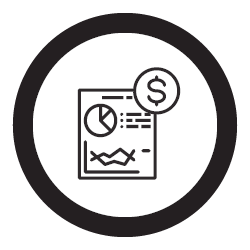
1. The cost of financing
Of the various expenses that affect your carrying costs, perhaps the most significant is the cost of financing.
Also known as your capital costs or start-up costs, there are not expenses that you can avoid. Fortunately, most of these costs are one-time expenses - money spent on acquiring fixed assets such as land, buildings and equipment. These are only a few examples of capital costs in which you can invest.
And, of course, there is no doubt that they will affect your carrying costs.
Let’s say you’ve spent large amounts of money on revamping your stores. That often comes with a high capital overlay in specialised fixtures, lighting, signage, artwork and fittings. It’s the same for if you are opening a new store.
Although very attractive to your customers, the increased revenues and profit margins required to cover these costs are often not achievable. That’s especially true if you’ve been ambitious in your approach. Furthermore, to achieve the necessary turnover, you would need to carry additional stock. And that comes at a considerable risk to you; especially in difficult trading times.
Let’s look at the example of fancy Cosmetic stands and their display cassettes in which you would pack the cosmetics. These items have a limited product lifespan, and a range might not sell as well as expected, and they thus fail to cover the capital expenditure invested in the display. The result is that you’ll carry over old merchandise which would either need to be marked down or returned to the supplier.
The best way to hedge your bets and manage your capital costs in this instance is to pilot concepts or different approaches in select stores. By doing so, you can limit your risk.
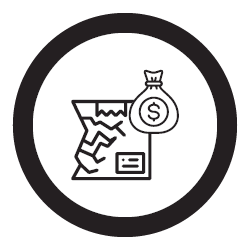
2. The cost of damage
A second factor to consider when it comes to your holding costs is the cost that comes about as a result of damage. Of course, damage could refer to many different things in retail, so it’s crucial to be specific.
For the sake of this piece, we’re referring to the damage done because of inventory shrinkage. There are many reasons why shrinkage occurs.
That said, if you want to understand how it affects your carrying costs, you first need to establish its source. Shrinkage could happen before you take delivery of a product. In that case, it’s an issue that your supplier would need to correct.
However, if it happens in your supply chain due to poor handling, or at any time while it’s in your store, you will be footing the bill. And, unfortunately, it comes straight off your bottom line.
Book a one-on-one consultation with us to hear how DotActiv drives inventory replenishment
Shrinkage directly reduces your gross profit by the total cost of the item. Also, shrink in your supply chain means that you need to carry a higher amount of safety stock. The higher your shrinkage, the more capital is tied up in goods. The other knock-on effect is the costs related to your stock holding, a factor which we will touch on in more detail later on in this piece.
As for what you can do to prevent shrinkage from getting out of control, it’s worth ensuring that you have the proper supply chain quality controls when receiving new stock. To avoid breakages, it’s essential that your staff are well trained and have the right equipment.
It's also worth looking at how you arrange your high shrinkage items in-store. Any such product could be in a glass case, or you could place it behind a counter that is only accessible by your staff to reduce the possibility of theft.
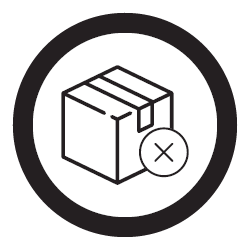
3. The cost of obsolescence
As your primary source of income comes from your products, it’s vital that you sell every last item that comes through your doors.
Unfortunately, that’s not always possible. And there many different reasons why. It could be because customer demand drops unexpectedly, leaving you with stock that you can’t sell. The product could have reached the end of its lifecycle, or the supplier has discontinued it suddenly, and you take it off the planogram immediately.
Regardless of why it happens, the result is that you're stuck with the very real problem of obsolescence. Also known as dead stock or obsolete inventory, it plays a significant role in your holding costs since it takes up space that you could use for stock that gives you a decent return on your investment.
What makes obsolescence even more problematic is that there is little chance of this stock exiting your business without it costing you. Of course, it’s not always a situation that you can avoid. Thus, in the case of dead stock, it’s more about how to manage it effectively than anything else.
If you want to prevent dead stock from overwhelming you, your first port of call is to manage your category caps through assortment planning. After that, it’s advisable that you have a firm grasp of your product lifecycle, best handled by making use of automated systems along with sound business workflows found in specialised software.
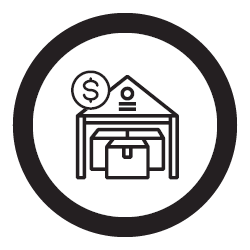
4. The cost of warehousing
As noted in this piece, when it comes to choosing your retail location, many factors influence the final decision, one of which is cost-related.
The last thing you’d want to do as a small retailer, for example, is open a store in a shopping mall when you know that your monthly turnover won’t cover the rent and utilities.
It’s the same when it comes to locating your warehouse or distribution centre (DC). It’s best to place it nearby roads infrastructure for easy access as well as close to your store where possible.
There is also the size of your warehouse to consider. A poorly planned DC size could mean that in the short term you would need to upgrade it, thereby increasing your costs. Of course, an oversized DC could mean you carry a heavy burden for no good reason, so you need to find the right balance. Also, poor planning could cause you severe cash flow issues and hamper growth.
If you’re facing any of the above issues, or it looks like you might encounter them shortly, there are a few ways to address them.
For one, you could look at a combination of DC models, some of which include having a smaller distribution centre for your primarily stocked fast-moving SKUs, then allowing your slower moving lines to be delivered directly to your stores from suppliers.
You could also split your main distribution centre. Securing a smaller space for high-value items can often work out cheaper than upgrading your security for your entire distribution centre.
Proper planning and forecasting are also effective ways to manage your carrying costs. By using an extensive history of data, you would be able to properly plan and build your own DC as it would be cheaper to own this asset than rent it.
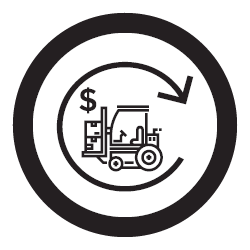
5. The cost of handling inventory
The last, but certainly not least factor that affects your stock holding costs is the actual handling of your inventory.
Similar to our point around the cost of damage, inventory handling could mean a variety of things. It could just as easily refer to the costs of poor inventory handling while in-store by staff. For the sake of this point, we’re only focusing on the costs that come with moving your inventory to and from your store.
In other words, your transport costs.
Let’s say, for example, that you have a poorly planning store which means that your stock runs out anywhere between one and 20 days. As a result, you could find yourself doing daily deliveries between your DC and store, which is inefficient.
By planning your store layout better, you could extend these delivery dates to every second day. That includes investing in planogram software. Doing that alone reduces your transport costs by 50% between one store and your DC. Multiple that by 100 or 200 stores and you’re talking about saving a lot of money, which you could use elsewhere in your business.
That said, efficient planning at a store level and an optimised supply chain doesn’t only lead to a decrease in the number of trips between your stores and distribution centres. It would also mean you have fewer vehicles on the road, thereby reducing any other transport expenses such as the cost of maintaining your delivery trucks.
Conclusion
At DotActiv, we offer specialist category management software and services that can help your retail business to improve its inventory efficiency and stand out from the competition. You can visit our online store here or book a complimentary consultation with a DotActiv expert.


